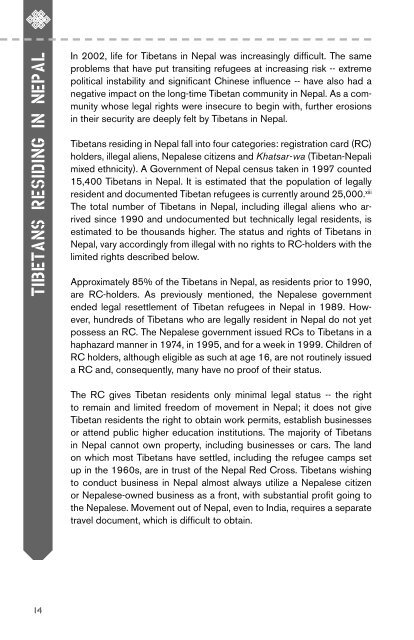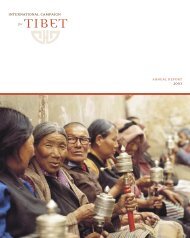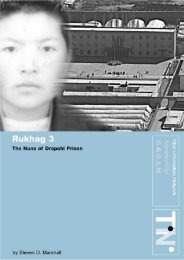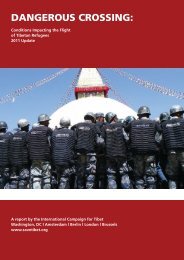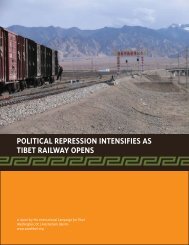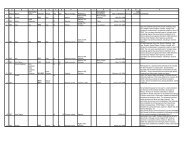download the report - International Campaign for Tibet
download the report - International Campaign for Tibet
download the report - International Campaign for Tibet
- No tags were found...
Create successful ePaper yourself
Turn your PDF publications into a flip-book with our unique Google optimized e-Paper software.
TIBETANS RESIDING IN NEPALIn 2002, life <strong>for</strong> <strong>Tibet</strong>ans in Nepal was increasingly difficult. The sameproblems that have put transiting refugees at increasing risk -- extremepolitical instability and significant Chinese influence -- have also had anegative impact on <strong>the</strong> long-time <strong>Tibet</strong>an community in Nepal. As a communitywhose legal rights were insecure to begin with, fur<strong>the</strong>r erosionsin <strong>the</strong>ir security are deeply felt by <strong>Tibet</strong>ans in Nepal.<strong>Tibet</strong>ans residing in Nepal fall into four categories: registration card (RC)holders, illegal aliens, Nepalese citizens and Khatsar-wa (<strong>Tibet</strong>an-Nepalimixed ethnicity). A Government of Nepal census taken in 1997 counted15,400 <strong>Tibet</strong>ans in Nepal. It is estimated that <strong>the</strong> population of legallyresident and documented <strong>Tibet</strong>an refugees is currently around 25,000. xiiiThe total number of <strong>Tibet</strong>ans in Nepal, including illegal aliens who arrivedsince 1990 and undocumented but technically legal residents, isestimated to be thousands higher. The status and rights of <strong>Tibet</strong>ans inNepal, vary accordingly from illegal with no rights to RC-holders with <strong>the</strong>limited rights described below.Approximately 85% of <strong>the</strong> <strong>Tibet</strong>ans in Nepal, as residents prior to 1990,are RC-holders. As previously mentioned, <strong>the</strong> Nepalese governmentended legal resettlement of <strong>Tibet</strong>an refugees in Nepal in 1989. However,hundreds of <strong>Tibet</strong>ans who are legally resident in Nepal do not yetpossess an RC. The Nepalese government issued RCs to <strong>Tibet</strong>ans in ahaphazard manner in 1974, in 1995, and <strong>for</strong> a week in 1999. Children ofRC holders, although eligible as such at age 16, are not routinely issueda RC and, consequently, many have no proof of <strong>the</strong>ir status.The RC gives <strong>Tibet</strong>an residents only minimal legal status -- <strong>the</strong> rightto remain and limited freedom of movement in Nepal; it does not give<strong>Tibet</strong>an residents <strong>the</strong> right to obtain work permits, establish businessesor attend public higher education institutions. The majority of <strong>Tibet</strong>ansin Nepal cannot own property, including businesses or cars. The landon which most <strong>Tibet</strong>ans have settled, including <strong>the</strong> refugee camps setup in <strong>the</strong> 1960s, are in trust of <strong>the</strong> Nepal Red Cross. <strong>Tibet</strong>ans wishingto conduct business in Nepal almost always utilize a Nepalese citizenor Nepalese-owned business as a front, with substantial profit going to<strong>the</strong> Nepalese. Movement out of Nepal, even to India, requires a separatetravel document, which is difficult to obtain.14


